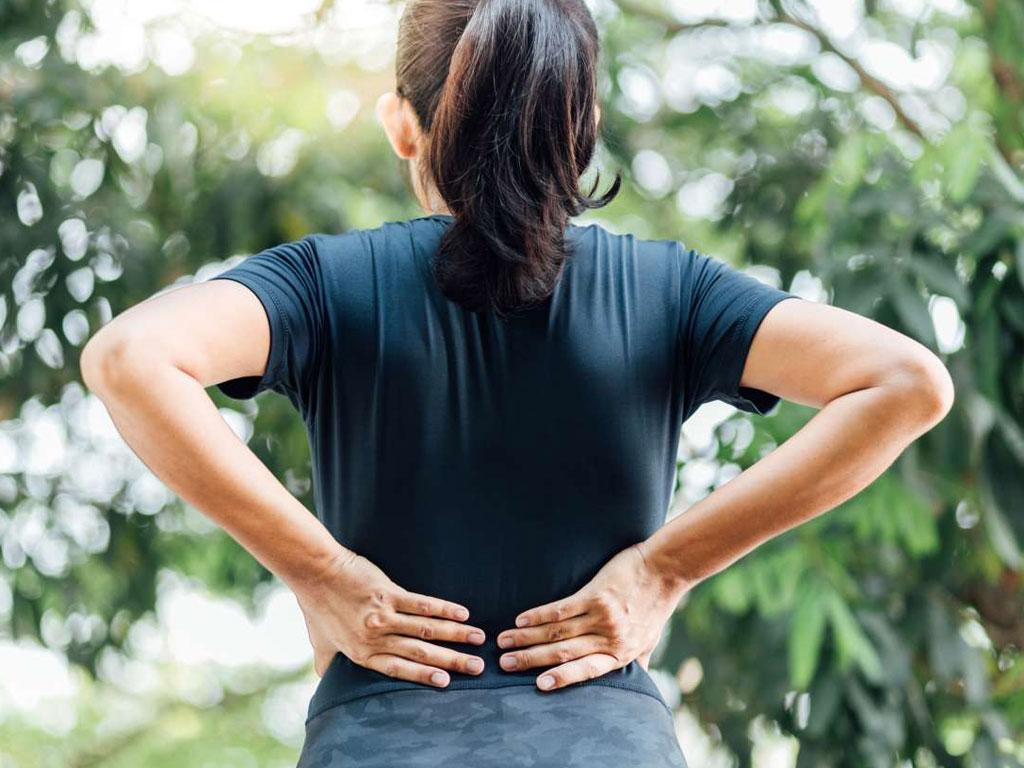
Back Pain (Lumbar Spondylosis)
Back Pain (Lumbar Spondylosis)
Low back pain is a very common complaint which most of us have experienced at least once in our life at some point of time or the other. Most back pains may be relieved by rest since mostly it may be caused by simple muscle strain due to certain activities. But when the back pain does not vanish by rest and persists, it may be due to some other underlying pathology which must be medically sought. The most important things to note in back pain is if the pain is spreading down to one or both legs, or if it is associated with any neurological symptoms like numbness, tingling sensation, pricking sensation etc. especially below knees. All the above complaints may be an indicator of compression to nerves from the spinal cord which supplies the lower limbs, and the compression can be due to a herniated disc. Well, this is a condition which surely requires careful management. Our present lifestyles have much to contribute in the increasing number of back pain cases every year. Either we stand for long periods or we just sit in front of a computer for long, or we may require lifting heavy objects etc. which are all contributing factors to back pain. Our low back is a very special area in our body; it connects the lower limbs with the rest of the body and is an area where the spinal cord ends. Spinal cord is a direct extension of the brain and there are numerous nerves that arise from the spinal cord that supply to all parts of our body. Due to its delicacy and great importance, it is firmly and smoothly wrapped and cushioned inside the spinal vertebrae. The vertebras are further supported by ligaments and muscles. All our activities, from lying down to sitting, sitting to standing, turning around, bending etc. demands movement of the back. Probably that’s why an aching back is so common. A trauma to the back can seriously affect the structures around the back and cause persisting back pain. Also repeated lifting of heavy weight can lead to intervertebral disc prolapse, nerve root compression and back pain. As we age, wear and tear happens in our spinal discs also, and this degeneration can lead to back pain. In that case, the condition is called Lumbar spondylosis.
When you have a serious pain in the back, you must go for the correct diagnosis before just taking pills to forget the pain and continuing your work. Proper diagnosis may require investigations like X-ray, MRI, blood and urine investigations etc. Even a urinary infection can lead to back pain.
We have effective management protocols for chronic back pain. We incorporate the efficiency of protocols of MIRA (Meticulous Integrated Rehabilitation Approach), which provide excellent results. We also provide you with all the necessary advises to prevent the recurrence and also recommend exercises to maintain the strength of your back. Chronic back pain will require some period of hospital stay for better results. Most back pains may not require surgeries for relief, even though some do. We can reduce the pace of degeneration in conditions like Lumbar spondylosis and bring great relief. Rejuvenation therapy works well in such cases.
- Multiple Sclerosis
- Paralysis
- Myastheania Gravis
- Spinal Cord Injury
- Parkinson's Disease
- Degenerative Disorders
- Accident Rehabilitation
- Weight Reduction
- Sciatica
- Hemorrhoids
- Fistula
- Psoriasis Management
- Arthritis
- Global Development Delay
- Rheumatoid Arthritis
- Sports Medicine
- Neck Pain (Cervical Spondylosis)
- Back Pain (Lumbar Spondylosis)
- Knee Pain - Osteo Arthritis
- Guillain-barré Syndrome
- Geriatric Rehabilitation
- Cerebral Palsy
- Stroke or Hemiplegia

Let's Help You!
It is a long established fact that a reader will be distracted by the readable content of a page when looking at its layout.
Book Now